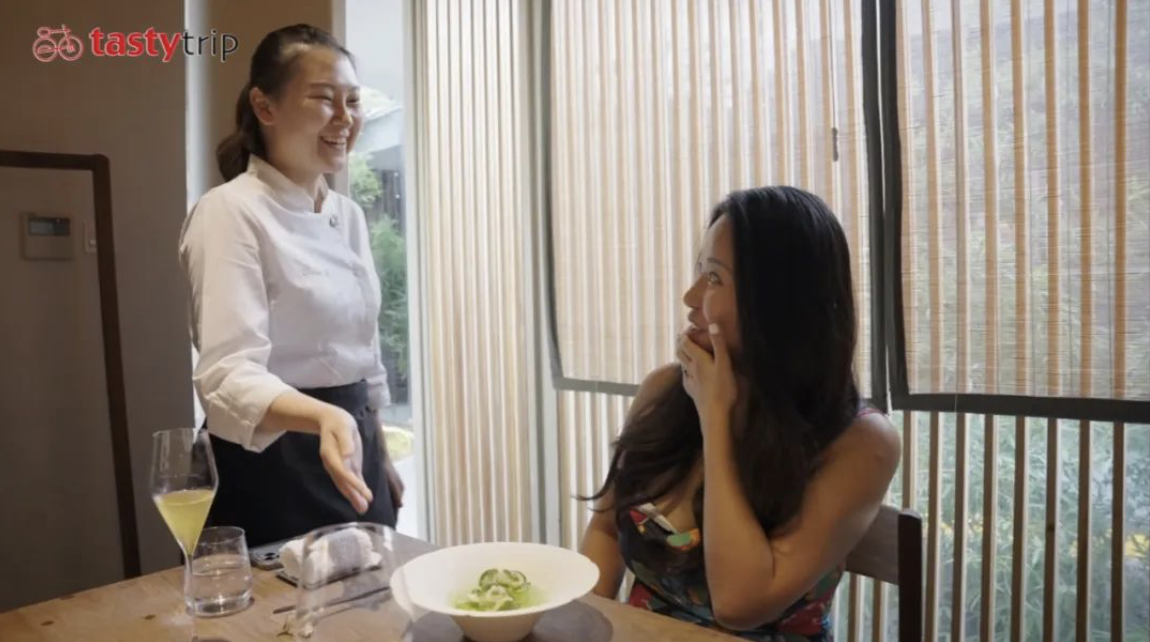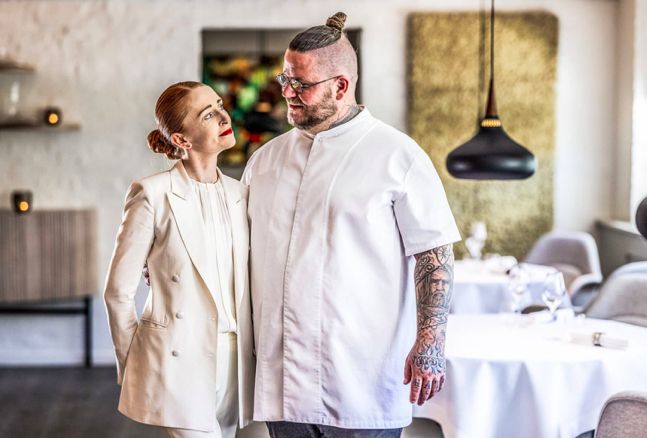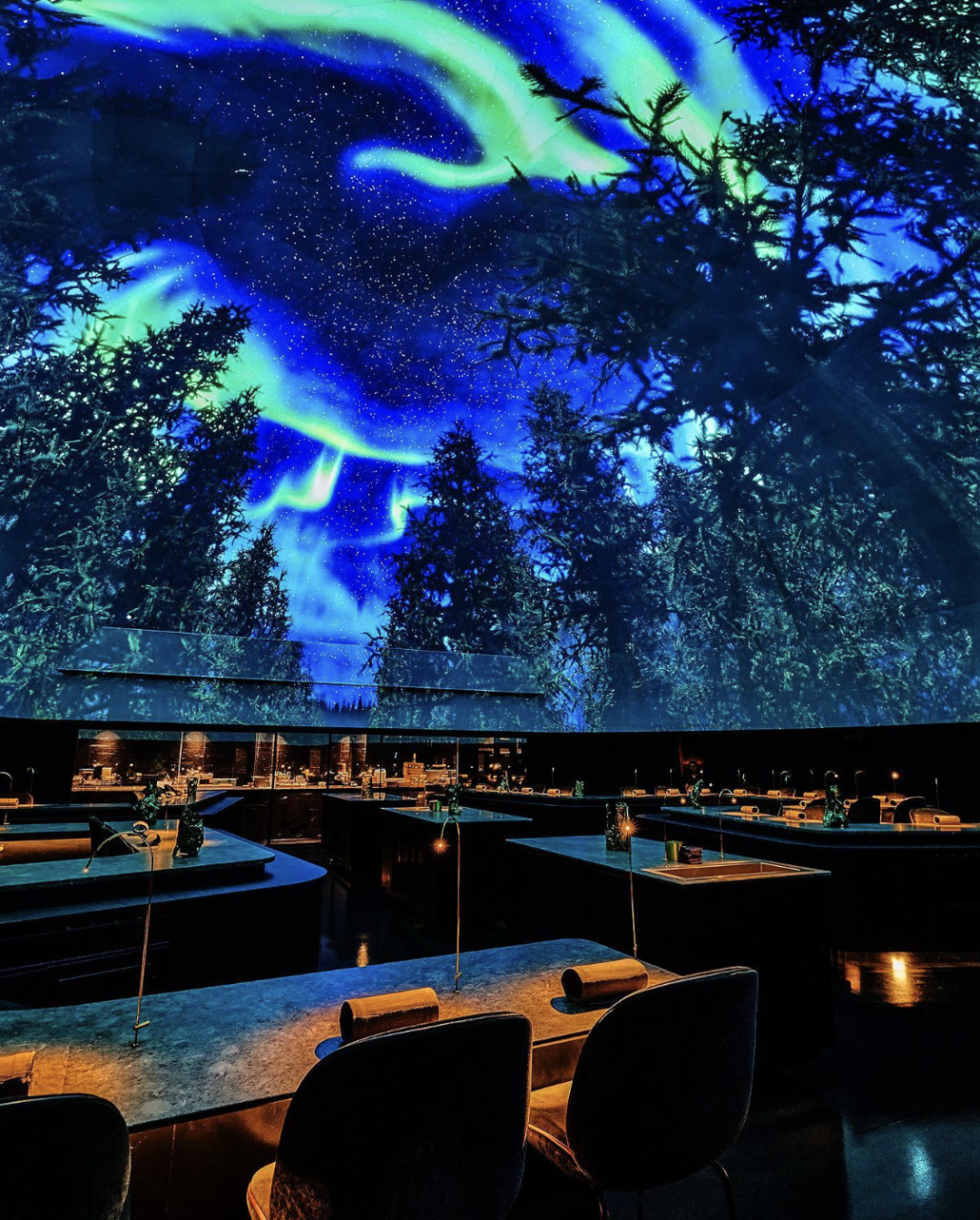Strolling through the hutong alleys of Dongsi Shiyitiao, compared to the last time I visited Beijing I seem to have stepped into a different world, where natural light penetrates and greenery abounds. The architectural style of Qu Lang Yuan is very charming and full of Chinese elements. Old structures, red bricks and tiles are cherished and beautifully preserved. Qu Lang Yuan has always been a hot topic among diners, and as soon as you step through the entrance, you will hear the cheerful voice of Chef Li Zhanxu.
Chef Li is friendly and pleasant, just like the girl next door, but her inner self is actually very unassuming, straightforward, and resilient. After graduating from high school, she set foot on French soil. She quickly mastered the French language, and embarked on a three-year programme of traditional French cooking. During the six years in France, she gained a wealth of experience by interning and working at various restaurants.
Resonance with French Cooking
When she first travelled to the small city of Angers in France, there was not a single Chinese restaurant in the area. Nostalgic for Chinese food, Chef Li started to explore cooking on her own.
She initially went to France with the intention of studying fashion design, however, she found that cooking provides an emotional connection with people. It builds a better understanding of the sharing culture of local community and how we communicate with each other.
Later on, Chef Li relocated to Lyon, the gastronomic capital of France. She chose to follow the well-organised training programme at Institut Paul Bocuse.To her surprise, stepping into a French kitchen and learning to cook helped her discover her true potential and passion in life. The comprehensive training courses laid a solid foundation for her future career.
 Chef Li Zhanxu (3rd from right) at Plaza Athénée by Alain Ducasse
Chef Li Zhanxu (3rd from right) at Plaza Athénée by Alain Ducasse
Fight and pride
After graduation, she went on to work at several well-known restaurants. As an Asian girl, she had to face challenges such as cultural differences and language barriers. But this has already become valuable experience in her life and growth.
She first worked in Lyon with Chef Christophe Roure, who, after obtaining the MOF, opened a Michelin two-starred restaurant that’s known for its unique Japanese-inspired French cuisine. This experience left her with a deep understanding of the essential cooking styles from various cultures.
 (Left)Chef Christophe Roure (Right)Chef Li Zhanxu
(Left)Chef Christophe Roure (Right)Chef Li Zhanxu
She then went to Paris to join the Michelin three-starred restaurant Plaza Athénée, which specialises in seafood and grains and demands the highest level of culinary expertise. “It was extremely hard work,” she recalls. From 8 a.m. to 1 a.m., she worked hard and solved tasks in the kitchen. The experience provided her with an insight into the operation and management of a fine dining restaurant and posed a greater challenge to her culinary skills. She finished the programme with an outstanding score of 18/20, making her one of the top interns in the school. Her learning journey was captured in a documentary made by French television TF1.
 Chef Li Zhanxu(7th from right) at Plaza Athénée by Alain Ducasse
Chef Li Zhanxu(7th from right) at Plaza Athénée by Alain Ducasse
The trip in Paris also extended to OKA, a one-starred restaurant run by Brazilian Chef Raphaël Rego, which gave her the opportunity to reach out and communicate with diners. It broadened her horizons and also rewarded her with the encouragement and support she needed to go further in her culinary endeavours.
Returning to Beijing
Looking back on her time in France, Li admits that she was considering staying longer. Before joining OKA, she felt that her experience at Athénée had been tough and wanted to learn dessert making. She was Chef de Partie at OKA and had received the working visa before the outbreak of covid. The restaurant was forced to close down, and she finally decided to return to Beijing.
She recalls how impressed she was with the setting of Qu Lang Yuan since she first visited the venue for a meal in 2017. She felt she could make a difference by combining local Chinese ingredients, serving wares with her own culinary philosophy. This is why she chose to return to Qu Lang Yuan.

With a vision in mind and a desire to attract diners from diverseplaces, Chef Li collaborates with a different artist every quarter to bring more possibilities to the restaurant space. Exhibitions in the pipeline include traditional artefact displays, so as to create an even more stunning culinary experience that blends food, paintings and wares.
The Essence of Her Cooking
Chef Li’s cooking philosophy is rooted in Chinese ingredients and culinary culture, while also incorporating the essence of Western cuisine, injecting a fresh vitality and creativity into the ingredients. The variety of Chinese ingredients continues to expand, with seafood and various vegetables gradually elevating in quality.
We may take the way she cooks sea cucumber as an example. The traditional cooking methods may involve braising or stewing, but she prefers to present the deliciousness of sea cucumber in innovative ways, challenging the traditional cooking techniques. The cooking philosophy of both Chef Li and Qu Lang Yuan is not just about deconstructing tradition, but constantly refreshing herself through breakthroughs.
 Sea cucumber, barnacle, gillardeau oyster, wakame, seaweed
Sea cucumber, barnacle, gillardeau oyster, wakame, seaweed
The summer menu is based on the concept of the “height of summer”. From “Scallop, watercress, cucumberlychee, lemon leaf oil”, to litsea cubeba oil and Japanese soy sauce vacuum-marinated sea cucumber, the appetizers are perfectly crisp and blends seamlessly into the overall dish. Such bold combinations seem to reveal Chef Li’s unique style. She skillfully incorporates Chinese wine and special rice wine into the set menu, adding another layer of anticipation.
Underneath another dish of air-dried pumpkin flowers, there are stir-fried savory “noodles” made from king oyster mushroom. Recently, many European chefs have drawn attention by cutting squid into noodles, while cutting king oyster mushrooms into noodles is equally creative, providing an additional option for those pursuing a low-carb diet, bringing pleasure to their taste buds.
 maitake, king oyster mushroom, pumpkin flower
maitake, king oyster mushroom, pumpkin flower
The first main course is oil-sealed fresh abalone, grilled over charcoal to be tender and more fragrant. The combination of truffle chicken stock and abalone slices, along with a sauce made from abalone liver and Sichuan pepper, blends the essence of Chinese, French, and Japanese cuisines. Aged M9 wagyu beef seasoned with a secret sauce and salsola collina, presents the texture of stingray slices similar to beef tendon, served in a yakitori style.
The signature Jack mackerel is air-dried overnight, delivering a richer flavor. Excess oil on its surface can be directly used for cooking, and the remaining tender fish meat mixed with dried radish from Chaozhou are added to glutinous rice. The pan-fried fish is cooked to perfection, making it a masterpiece of the day. As for dessert, Oolong crème brûlée paired with purslane leaf and beetroot sorbet offers a refreshing taste that lingers on the palate. The richness of the Oolong tea intertwines unexpectedly harmoniously with the creamy flavor, leaving a deep impression.
Seeing tradition with an open mind
The path of innovationfor Chinese cuisine is facing pressure. Some believe that creative dishes detract from tradition. But at the same time I also feel that Chinese cuisine has many untapped potential and great opportunity. Many young chefs are more exposed to Western cuisine during their studies, and the number of Chinese culinary schools is relatively small. This may have made innovation in Chinese cuisine more difficult.
 Chef Li Zhanxu and the Author
Chef Li Zhanxu and the Author
Author: Jocelyn 华姐
Photo: Qu Lang Yuan, Allstar Communications, Katherine Gu










